VR takes clubbers back to 1989's summer of love
 BBC
BBCBritain, 1989.
Margaret Thatcher was prime minister, and the past decade was characterised by great economic growth - and great social hardships, including strikes, racial tension and football hooliganism.
For many younger people, Britain felt like a nation divided.
But suddenly, a new, hedonistic youth culture swept the nation. The acid house rave scene.
And now, an experience at the Barbican can take you back to those hedonistic times.
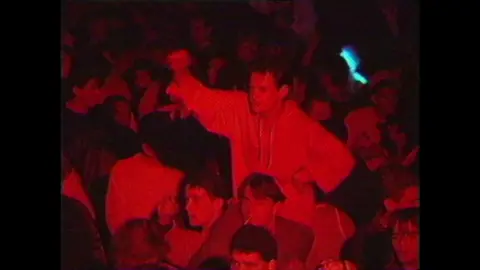
Based around electronic club music born out of Chicago and fuelled by a new type of illegal synthetic drug - ecstasy - dancing at secret raves in fields and warehouses up and down the country became the way many young people broke through social and racial divides and stick two fingers up to the authorities.
In Pursuit of Repetitive Beats is the brainchild of creator and director Darren Emerson, (no not that Darren Emerson, though being a Techno DJ and member of the band Underworld would be very convenient to this story) who wants to give would-be ravers as close to an authentic experience of that time as possible.
As part of it, the VR ravers don their virtual reality goggles, vibrating vest, headphones and finger controllers to get virtually into an old red Peugeot and drive down the motorway and find the rave.
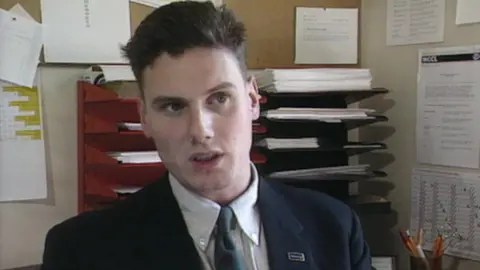
The choice of car is a deliberate bit of nostalgia for Mr Emerson.
"The red 205 was because my mate had a red 205, but it wasn't a GTi, which I like to remind him.
"This experience has travelled all around the world but now we're here in London, and it really tells a universal story.
"It's about going out with your friends, getting lost, taking a chance and finding your community - and when the sun comes up the next morning you feel completely changed."
Transported back to 1989 at the experience is DJ Erique Dial, one of the producers of Raze Break 4 Love, a seminal house music track of the late 1980s.
Mr Dial arrived in Britain from the US just as the house scene was starting to hit. He never left.
He started sampling sounds from blue movies in London's Soho - they were eventually used on the track by Vaughan Mason.
"I heard the track being played again and again on a pirate radio station," Mr Dial said, "and I was like, that's where those samples ended up".
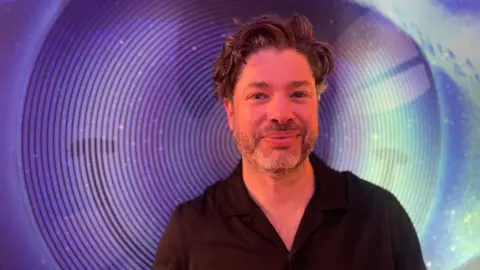
Mr Dial's first rave experience was in 1987 at Clink St in east London.
"It was this derelict sort of place. The glow-in-the-dark stuff, sweat dripping down from the ceiling.
"You'd see these people who you would never talk to on the street. You would never be seen with these people, and there you are, you're hugging, you're dancing. A lot of people made friends for life.
"No one's fighting any more, they're just out raving."
He still plays the music from those times at raves across London, where the clientele varies from people in their 50s or older, who experienced the scene first time round, and younger people discovering the music through their parents or through video games like Grand Theft Auto.
Mr Dial was joined on the virtual dancefloor by Richard Raindance, who organised London's first licenced rave in 1989.
Mr Raindance comes from what he describes as an "English crime family" and says without the London rave scene he would probably have followed them.
"Raves were a complete mixture of young and old, everyone was there for the same reason, to just forget your problems," he said.
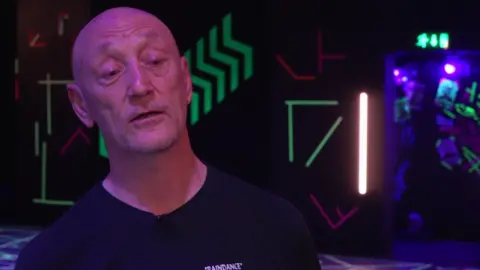
In 1989 the Raindance team hired coaches to transport thousands of revellers from the West End to continue partying in a field in Jenkins Lane, Barking, after the nightclubs closed at 02:00.
Mr Raindance said these all-night outdoor raves "definitely hastened the all-night licences in clubland".
He still puts on Raindance raves today, although nowadays many of them take place in the daytime.
"It's never stopped.
"It's changed but it never went away. It's still a beautiful experience."
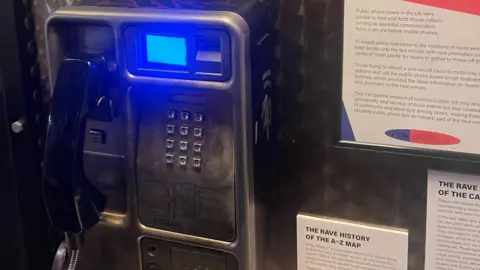
Leaving the Barbican event, was actor Ryan Hurst.
Originally from Liverpool and now living in London, he used to attend raves as a young teen and said the VR experience was "like walking through a past life".
"I was back to being a teenager again, tagging along as a fourteen-year old with older brothers, older sisters, waiting on the M62 at one of the service stations for that phone call.
"We used to live for the weekend. Everyone used to live for the weekend. It's all you would talk about all week at school, who was going where.
You made friends for life."
He's not the only one getting emotional. There is a chance for visitors to In Pursuit Of Repetitive Beats to leave a recorded message on the phone box at the entrance to the experience.
Darren Emerson is saving them all, and he let me hear some of those left at the London experience.
" It completely took me back to 1989," said one message.
"I feel quite emotional, I'm going to be sixty next week."
"I feel blessed that I could re-live those emotions," said another, and "best times ever" said a third.
"Still listening to acid house, still raving."
